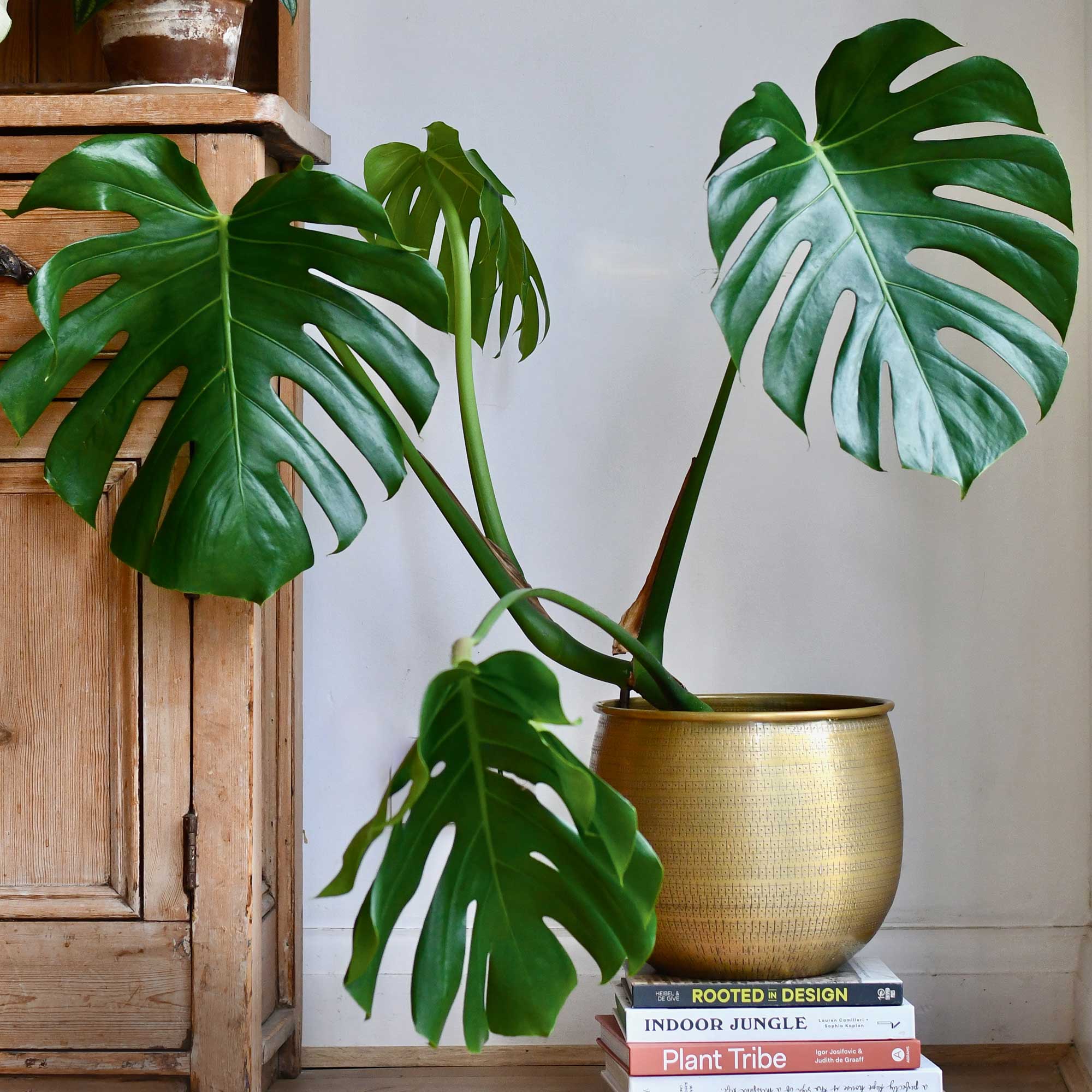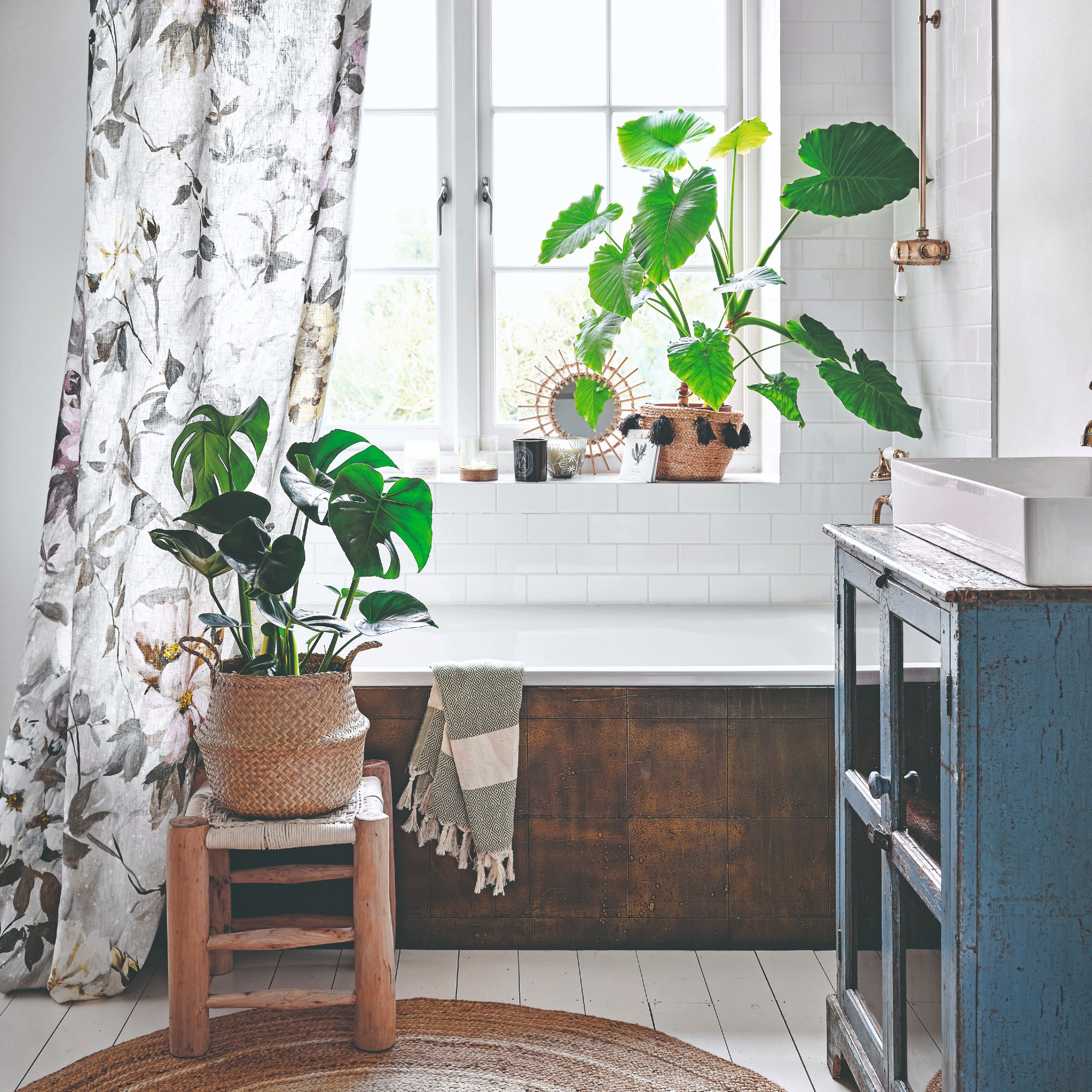
Capable of growing up to four metres tall and with leaves that can span 45cm across, a fully grown monstera deliciosa is a stunning plant. It is easy to learn how to care for these houseplant giants, and despite their size, they are easy to look after.
A staple of houseplant ideas, the monstera's distinctive split leaves – which earned it the nickname the Swiss cheese plant – have become a beloved motif in their own right, found across everything from decor to clothing. But nothing beats the real thing.
How to care for monstera
Give a monstera the right climate and care, and you will be rewarded with quick growth and stunning leaves – the jewel in the crown of your houseplant collection.
What you will need
- Monstera deliciosa plant
- Plastic pot with drainage holes – one size larger than the size of the plant bought
- A liquid houseplant fertiliser, such as Baby Bio Houseplant Fertiliser on Amazon
- A small trowel, such as the compact Kent & Stowe Capability trowel on Amazon
- Houseplant compost, for example Westland Houseplant Potting mix on Amazon
- Moss pole (optional)
Where to buy a monstera deliciosa
This year's hottest houseplant trend is to go big, so if you're looking for a stunner to make a statement as a living room houseplant idea, make sure you buy a healthy monstera from a reputable supplier, such as a garden centre or one of the best online shops for buying houseplants. If you start with a healthy plant, you'll find caring for a monstera a breeze.
Best for gifting
This classic 70s houseplant is supplied in a choice of pots, together with a mossy pole for it to grow up. Included is a free handwritten card with a message of your choice
Best for size options
Dobbies offers a range of pack sizes for the ever-popular Swiss cheese plant, from a small 11cm pot, to a 3 litre pot, plus options to add a moss pole, or a 2- or 3-plant pack
Best for young plants
Be guaranteed of a healthy plant in a 14cm pot delivered to your door by these house plant specialists. The young plants will grow quickly and their leaves split as they mature
How to take care of monstera
One of our favourite living room houseplant ideas due to their impactful size, monsteras make a lovely addition to any space.
Like polka dot begonias, monsteras are native to the hot and humid tropical forests of Mexico, Guatemala, Costa Rica and Panama. ‘Monstera plants thrive best in temperatures ranging between 20ºC and 30ºC,’ advises Tom Cook, houseplant buyer at British Garden Centres.
Instantly recognisable, the monstera’s leaves are characterised by large splits. These splits are a sign of a healthy and mature plant and therefore should be encouraged.
The splits in the leaves aren’t just beautiful: ‘The holes are an adaptation to their native forest environment, allowing the plant to capture light efficiently and withstand heavy rainfall,’ says Natalie Bourn, shop manager at Between Two Thorns.
Split leaves are a sign of maturity, so will not appear in younger plants.
However, you should be aware that the monstera is highly toxic to animals, so if you have pets, it might be advisable to instead choose a pet-friendly houseplant.
How much light does a monstera need?
The plants benefit from bright, indirect sunlight – a few feet away from a window is ideal.
‘To encourage fenestrations – or splits – place your monstera in the brightest, in-direct light possible and wipe down the leaves occasionally to allow for optimum levels of photosynthesis,' advises Evie Brownlee, supervisor at Grow Urban.
How often do you water a monstera?
As with any tropical plant, less is more when it comes to watering, especially when it comes to caring for houseplants over winter.
‘Monsteras like less watering than you would think, and you should allow the top two inches of soil to dry out between waterings,’ says Evie Brownlee. ‘This is usually every 10 to 14 days but can be less in the winter, as the cooler temperatures prevent the compost from drying out as quickly.'
There are ways to save an overwatered plant in the event you get too carried away with watering but try and avoid this by watering only when it's needed.
Should I mist my monstera?
'It is important to mist the leaves of monstera plants every few days to maintain the humidity,’ adds Evie, just as you would with a fiddle leaf fig, a prayer plant, and many of the other popular houseplant varieties that originate from hot and humid environments. The frequency of misting can be reduced during winter months.
Should I cut brown bits off monstera?
Yes you can trim off brown bits on the leaves of your monstera. Leaves with brown bits are a sign that 'the plant is craving humidity – misting can do wonders,’ says Emily Lawlor, owner of Happy Houseplants.
Yellow leaves, on the other hand, are a sign that you are overwatering – only water when the soil feels dry.

How to repot a monstera
Look out for signs that your monstera is outgrowing its current pot. These signs include the roots growing out of the drainage holes; the soil overflowing from the pot; the plant needing more regular watering or drying out more quickly, and stunted growth.
‘Remember monsteras have aerial roots – so roots appearing above the pot doesn’t mean that you need to repot,’ adds Henry Davenport from Hortology.
‘Repot your plant in spring or summer when it is actively growing. Gently remove the plant from the old pot, loosen the roots, and place it in the new pot with free-draining potting mix,’ continues Henry.
Don't fall foul of the repotting mistakes many people make, such as repotting in a container that is too large.
‘If you’d prefer a smaller plant, you can restrict the amount of room it has
to grow and trim off leaves to keep it the shape you wish,’ adds Morag Hill, co-founder of The Little Botanical.
It is also really easy to propagate monstera plants, and they make great gifts.
How to support a monstera plant as it grows
In the wild, monsteras use their aerial roots to cling to the trunks of other trees for support. ‘Stems on a mature monstera can easily reach over a metre in height, and if unsupported those stems will drop to ground level – there are very few homes where a plant with a two-metre spread isn’t going to be in the way. Lifting leaves and stems vertically gives a tree-like appearance,’ says Henry Davenport. Typical supports are moss or coir poles.
Supporting your monstera with a moss pole is surprisingly easy:
- When repotting, position the moistened moss pole at the base of the pot and firm in place with a little bit of soil.
- Then add your plant and fill the pot with soil to secure them both.
- You can then work your way up the plant, attaching it to the post – Velcro plant tape is the easiest method, but you can also use twine.
- While the moss pole can act as a crutch for your plant, you can encourage the aerial roots to grow into the pole by keeping it moist. Spritz with a misting spray to encourage root growth.
‘Plant supports can also help with the splitting of leaves,’ adds Henry. ‘Supporting the plant means that it can focus its energy on growing larger leaves rather than thicker stems, and the leaves can grow to a larger size as they are being supported by something sturdier than their own stems.’







